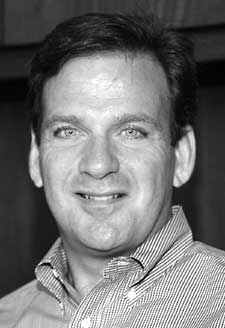Pledging to reach out to all areas of campus, Life Sciences Institute (LSI) Director Alan Saltiel told the Senate Assembly Jan. 27 that collaboration within and outside the institute is key to the success of U-M’s Life Sciences Initiative, part of the statewide Life Sciences Corridor.

From the institute’s large, open-space laboratories to the physical bridge connecting the new buildings to the Medical School complex, Saltiel said collaboration across fields and disciplines will allow LSI faculty to cover many areas and try new things. The LSI is expected to open in September, he said, with construction completed in early 2004.
“We are faced with a new age of research,” said Saltiel, who showed the Senate an interactive tour of the facility and surrounding areas. “We have to be the hub for collaboration and interaction in the life sciences. As we develop the LSI and identify certain problems, we will reach out for collaborations.”
Saltiel said LSI faculty will focus on three themes in the post-genomic scientific revolution: genetics, genomics and proteomics; structural, chemical and computational biology; and molecular and cellular biology. Scientists from the three areas will focus on common problems in biology and then reach outside for collaboration, he said.
Economic development, educating tomorrow’s scientific stars and increasing public understanding of science also are goals for the LSI, Saltiel said. Six charter faculty appointed in September are a set of “real superstars,” a dynamic group that covers most areas in the life sciences, he said.
Saltiel said the $100 million, 230,000-square-foot LSI will house 20-30 faculty when fully operational, and four-five senior-level staff when the building opens. The LSI is a research institute and will not grant tenure, he said, but LSI faculty are expected to have tenure or tenure-track appointments in departments across campus.
“Future recruiting will be defined by space and also finding people excited about potential collaborations in the LSI,” Saltiel said. “The first recruits will set the stage for areas of interest and areas of collaboration. We want to find people who want to live in a multi-disciplinary world and want to collaborate.”
The institute was founded in 2001 with a $130 million endowment from the University that will be used, in part, for start-up and recruiting costs, Saltiel told the assembly. He said LSI also will be funded from indirect cost returns on research grants, and “we will have to do fundraising like everyone else.”
Along with recruiting and start-up of the LSI, other initiatives under consideration include internal sabbaticals, establishing sister institutions and working with artists to decorate the facility, Saltiel said. The institute’s second annual symposium, “Genetic Insights Into Biology and Disease,” is scheduled for May 13 at the Ford Auditorium in U-M Hospital.

